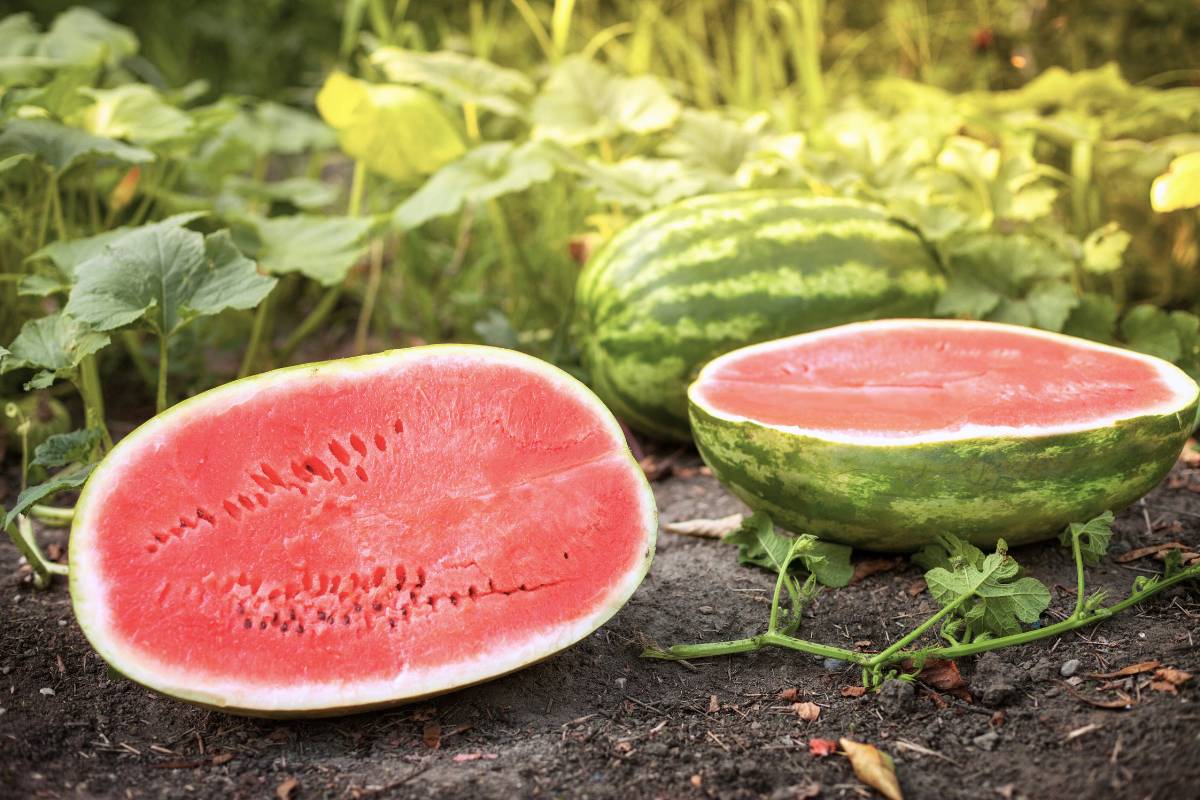Watermelons are the stars of summertime, offering a burst of juicy refreshment on hot, sunny days. Growing these luscious fruits at home is a rewarding experience, but the real magic only happens if you can tell when the melons are ripe and ready to harvest.
There are multiple signs that will let you know when a watermelon is approaching peak ripeness. Read on to find out how to read the clues - and learn one foolproof method - so you can harvest your melons and eat them at their best.
Sound Check
Many people swear by the sound test to tell when a melon is ripe. When you give your melon a firm slap or knock you want to hear a resonant sound, akin to the beat of a drum, rather than a dull thud. However, if you're not well-versed in distinguishing a thud from a thump or a knock, this method may cause confusion. It’s best used to confirm other evidence rather than as your sole test for ripeness.
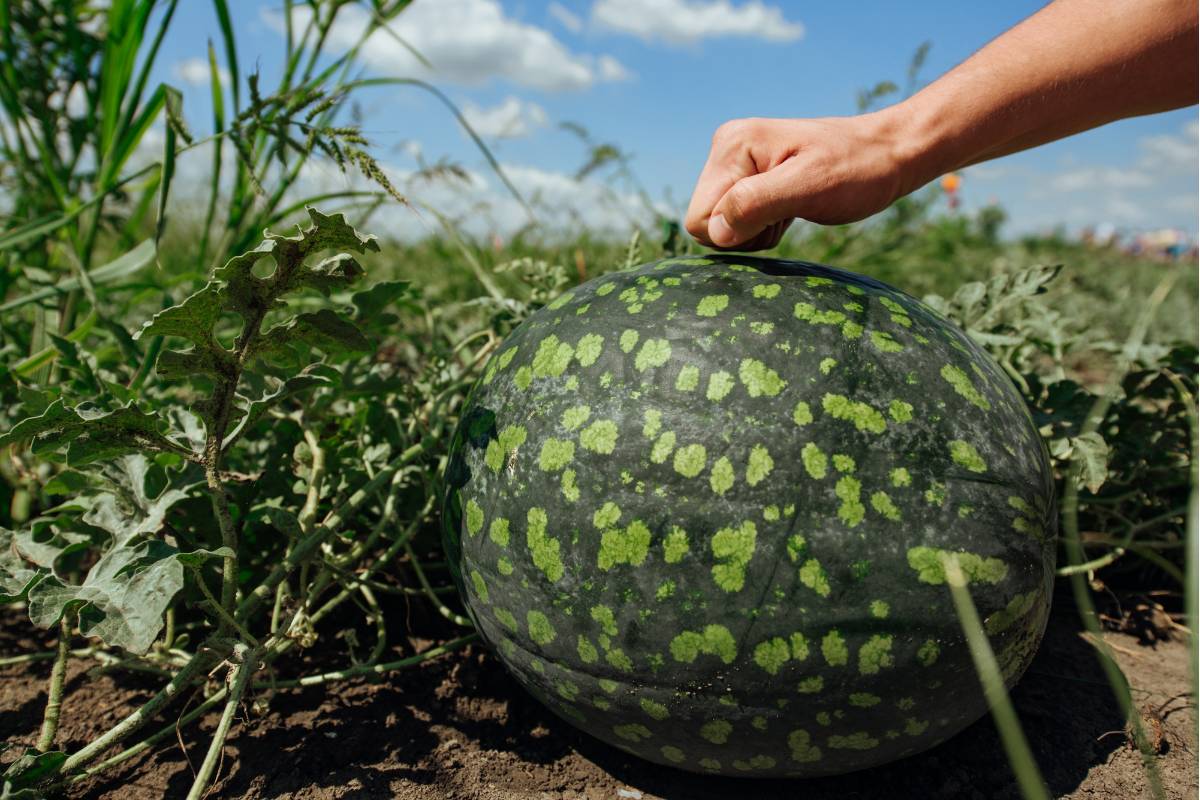
Monitor the Yellow Patch
The yellow patch, also known as the field spot or ground spot, is where the watermelon rests on the ground or mulch as it grows. This spot undergoes a subtle transformation from white to creamy yellow when the fruit is ripe. While this test is reliable, it can be a burden to check heavy fruit, not to mention to determine the difference between white, off-white, beige, light yellow and cream, so regular monitoring is needed with this method to detect the change in colour when it occurs.
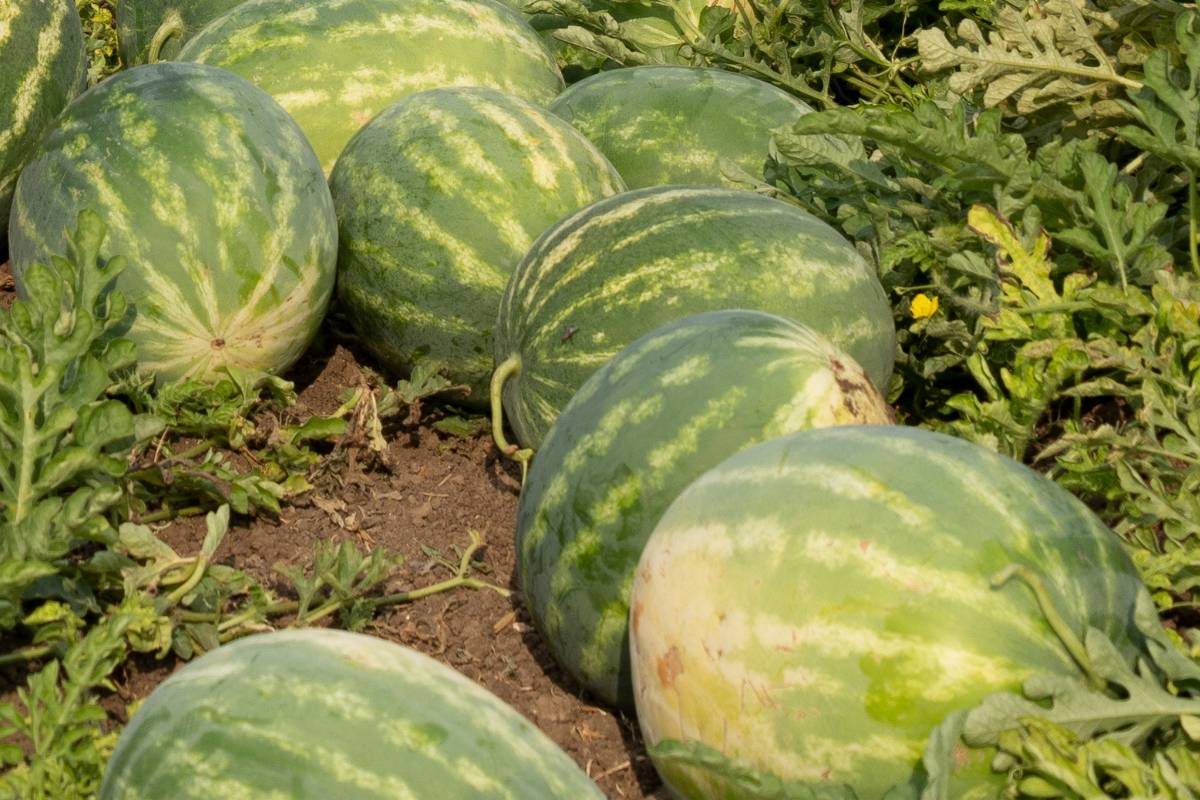
Tendril Tale
For the most reliable assessment of ripeness, look to the tendril opposite the fruit. Each watermelon has a leaf and a tendril opposite where it's attached to the vine. The curly tendril is sometimes called the ‘pig’s tail’, for obvious reasons, and it's a reliable indicator of ripeness.
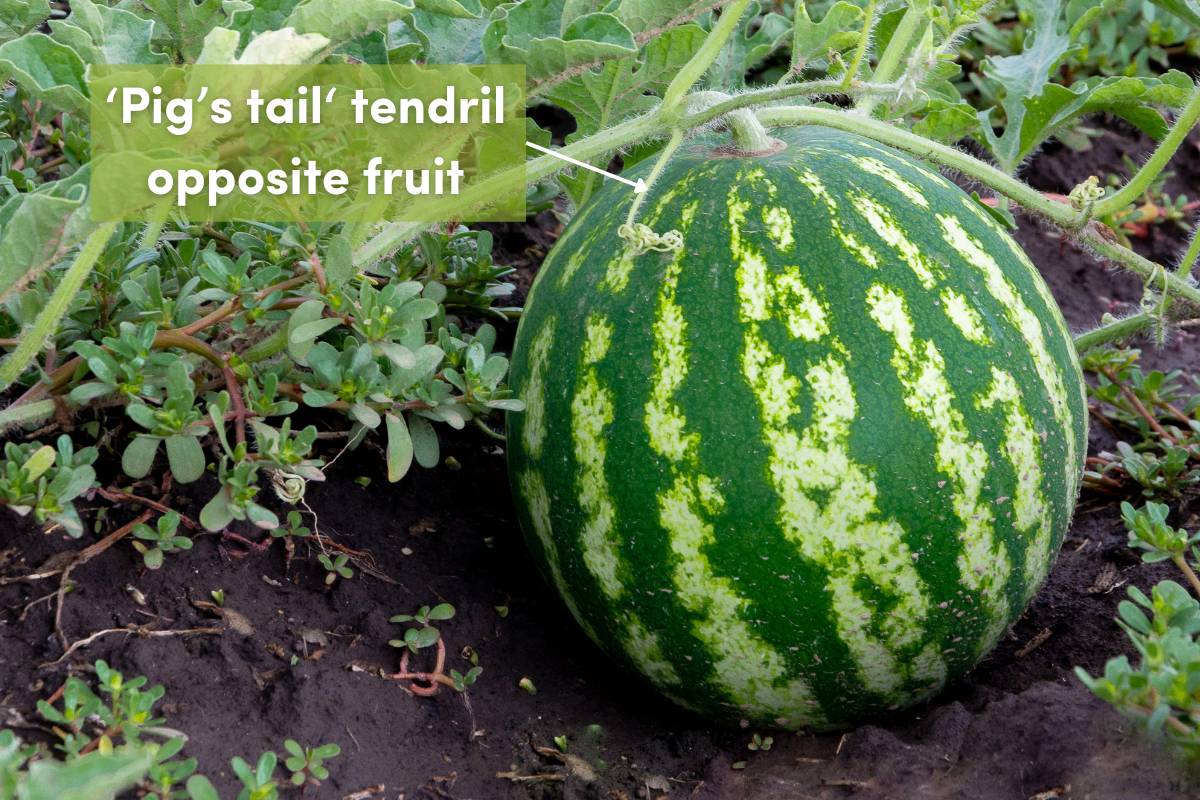
If the pig’s tail looks fresh and green, your watermelon isn't ripe yet. However, when the watermelon reaches peak ripeness the tendril will dry up and turn brown, starting at its tip and working its way down towards where it meets the vine. Inspect it all the way to the base – if the entire tendril is dry and brown, your melon is ready for harvest. Easy!
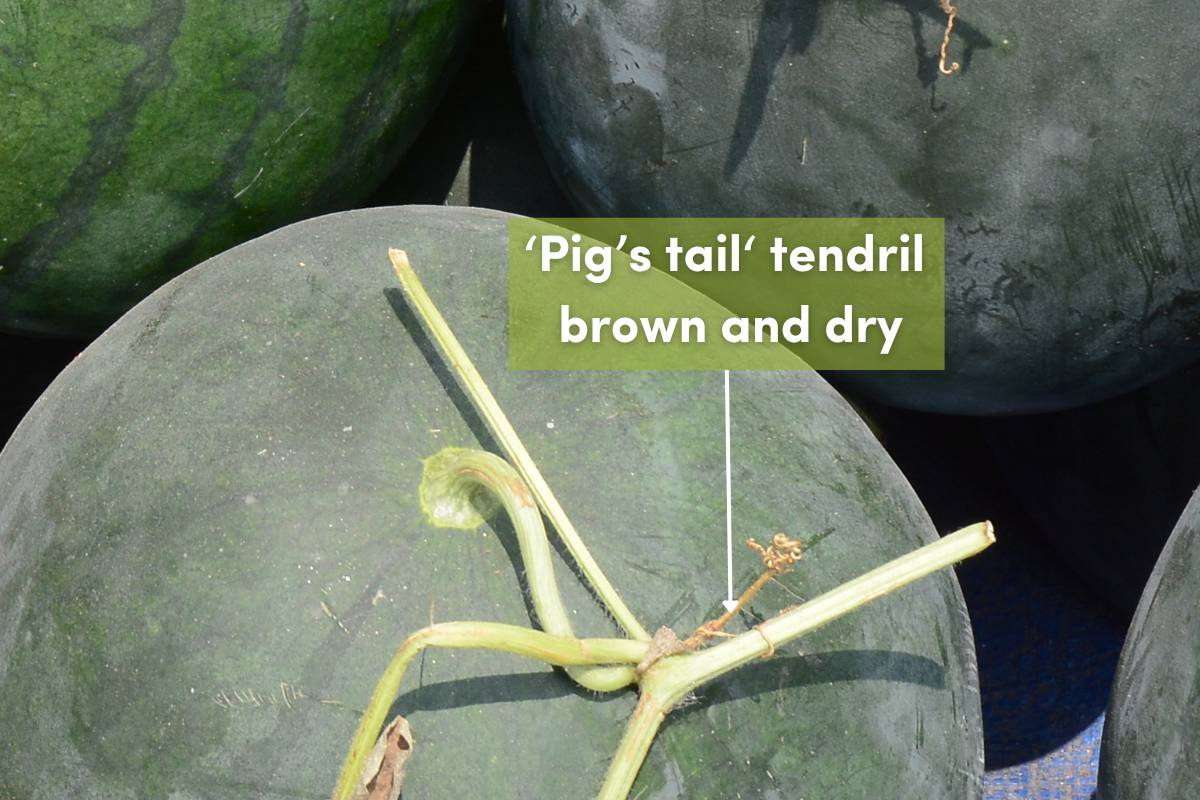
Other Signs
Other factors that may back up your decision to harvest are aroma and weight. As the watermelon ripens, it will develop a sweet, fruity fragrance that's hard to resist. Unfortunately, you may not be the only one to smell the sweet aroma; protecting the fruit from possums, rodents and other pests may be necessary as the fruit ripens.
Ripe watermelons should also feel heavy for their size. When you pick one up, it should be weighty in your hands, indicating it's packed with succulent juice.
How to Harvest
Harvest watermelons by cutting them from the vine or bush, leaving 5-10cm of stem attached to the fruit. Store harvested fruit in the fridge and eat it within a few days of harvest.
While growing watermelons at home is relatively easy with the right mix of heat and water, knowing when they're ripe is the key to enjoying their sweet, juicy goodness to its fullest. Whether you're going for the satisfying thump, the evolving yellow patch, or the reliable tendril test, your taste buds will thank you when you bite into a perfectly ripe watermelon. So, go ahead, pick your watermelon with confidence, and savour the taste of summer!
